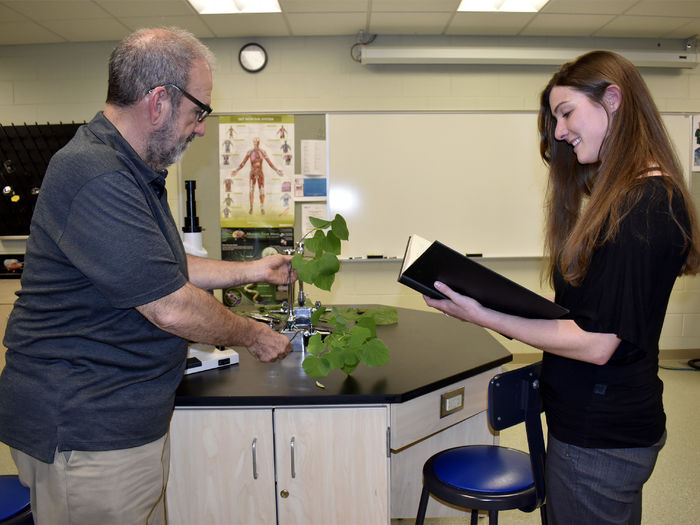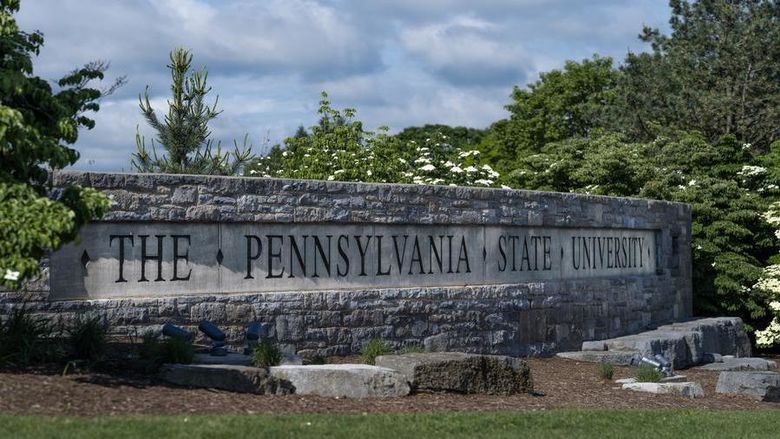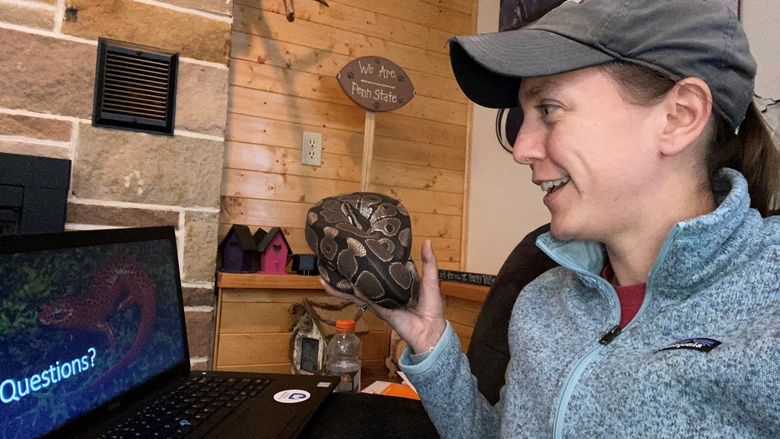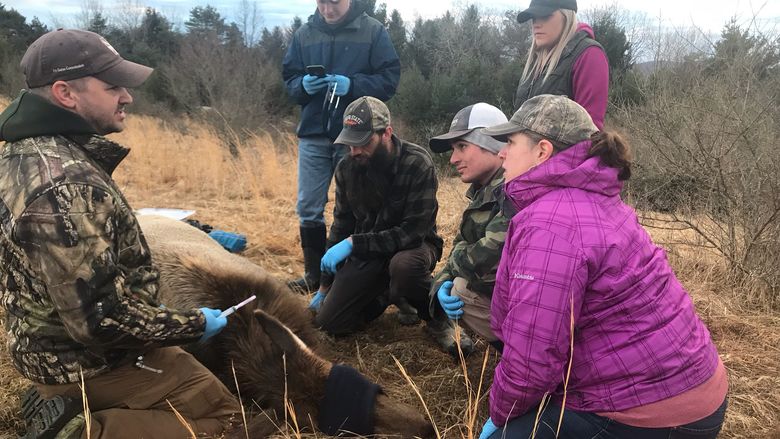
Robert Loeb, a professor in biology and forestry at Penn State DuBois, investigated the diversity of early botanical gardens with a team of undergraduate students. From left: Alaina Leasure, Olivia McGraw, Loeb, Joelle Manners and Taylor Walborn.
DuBOIS, Pa. — Five botanical gardens in the United States dating to the early 1800s were high diversity horticultural microcosms representing nearly every continent, yet had few plants in common, according to Penn State researchers.
The team, led by Robert Loeb, professor of biology and forestry at Penn State DuBois, published its findings in the journal Studies in the History of Gardens & Designed Landscapes.
“Our understanding of the evolution of species selection in gardens, both private and public botanical gardens, is limited by not having a comparative knowledge base of which species were selected throughout history in the United States,” Loeb said. “What is available today is quite small when compared to the wide variety of species reported in historical public and private gardens in the United States.”
Loeb and his team of undergraduate students compared six early 19th-century plant species lists from five botanical gardens — which no longer exist — to learn about the diversity found in United States botanical gardens during that period. The gardens they compared were: Bartram’s Botanic Garden in Pennsylvania, which had two lists; Botanical Garden of Transylvania University in Kentucky; Botanick Garden of South Carolina; Cambridge Botanic Garden in Massachusetts; and Elgin Botanic Garden in New York.
“It was a matter of old-fashioned research in botanical garden and horticultural society libraries to find these six species lists,” Loeb said. “Finding any listing of species in early 19th-century United States botanical gardens was quite a challenge — except for Bartram’s Botanical Garden in Philadelphia."
Joel Fry, who died earlier this year, was the director of the modern Bartram’s Garden in Philadelphia, and recommended to Loeb to use two species lists for the historical Bartram’s Botanic Garden in this research.
The researchers integrated the following information on each species from all six lists: Latin binomial; native geographic region; growth form (tree, shrub (including woody vines) perennial, biennial, or annual); hardiness in the climate of the Northeastern United States or requiring a greenhouse; and use in the historical period (medicinal, diet, agriculture, and arts). The biggest challenge of the research, Loeb said, was to translate historical botanical binomials into modern binomials, which required the use of both online and print resources.
“I was impressed with the tremendous diversity represented among the botanical gardens: 3,608 species from 1,480 genera and 222 families,” Loeb said. “Perhaps more remarkable was the fact that only 28 species were present in all five botanical gardens, which clearly indicates species selection was made independently and each botanical garden was obtaining specimens from different sources.”
Loeb also highlighted the vast number of species — 1,983 — were not native to North America.
“Those species were transported to the botanical gardens in pots strapped down on the deck of sailing ships that could take the better part of a year to get to the east coast of the United States from places such as Australia, Japan, and South Africa,” Loeb said.
According to Loeb, the historical information on native region, growth form and hardiness matched the modern information for more than 75% of the species. However, less than 40% of the medicinal species identified from the contemporary reference on medicinal plants were noted as medicinal species in the lists.
“Involving undergraduate students in research projects is a vital component of a university education because experiencing the discovery process of defining a research problem, addressing the methodological impediments and performing the hard work of overcoming the unknown to come up with an answer makes all of their course related classroom and laboratory learning more deeply meaningful and personally useful for the students,” Loeb said. “For me, the students provide fresh perspectives, creative thinking and the triumph of a colleague as their eyes brighten when the answer is found for a particularly tough question.”
Loeb expressed appreciation for Penn State DuBois’ support of travel to libraries.





